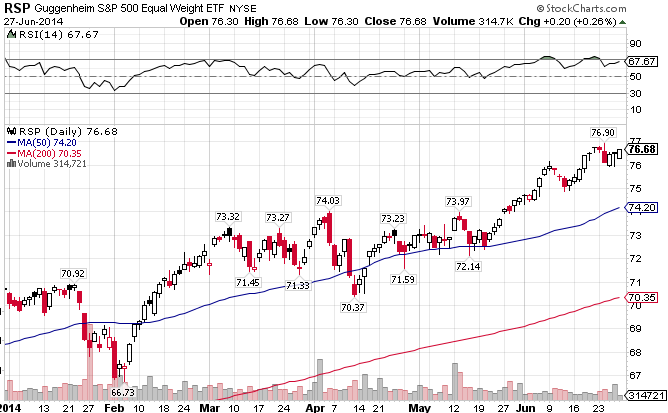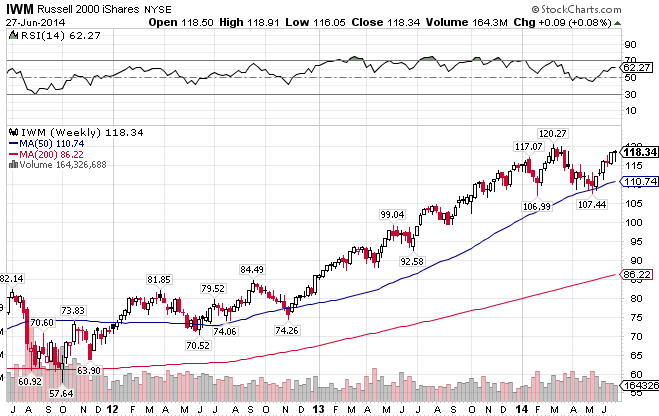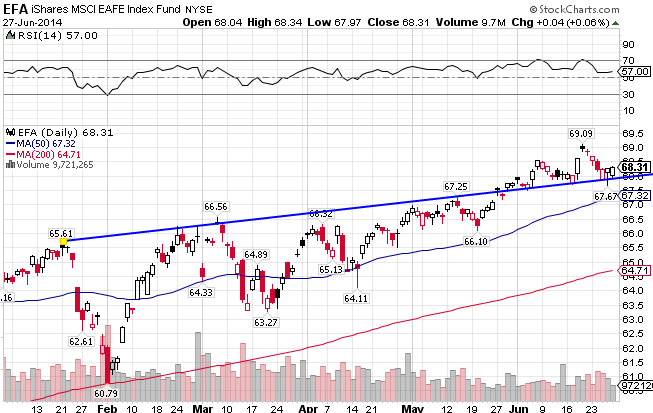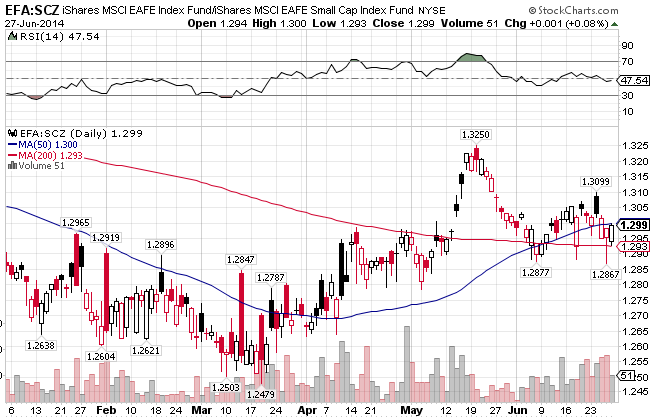The S&P 500 Cap-Weighted Index ((IVV)) has been on a slow, stubborn march forward after breaking through the 1900 level. The S&P 500 is up 7.22% for the year and made a new all-time high just last week. Is the 2000 level the next stop?
The S&P 500 Equal-Weighted index ((RSP)) is set up so that every stock in the index has the same weight, thereby eliminating market-weighting’s growth bias. As a result, the index tilts more towards mid-cap and value stocks, which accounts for much of the out-performance versus the cap-weighted index in the last decade. The index is up 8.43% year-to-date, slightly better than the cap-weighted index.
One of the themes for the past few years has been growth-oriented, smaller cap stocks outperforming high quality, blue chip stocks. Despite a correction that brought the market down to its 50-week moving average, the trend has stayed in tact…so far. On a shorter-term basis, the Russell 2000 Small Cap Index ((IWM)) is up only 2.85% YTD, compared to the over 7% gain for the S&P 500. After years of investors disregarding risk aversion in favor of returns, this index is finally took a beating. Low quality or speculative smaller-cap stocks tend to lead the market near the end of a bull phase. We’ll keep an eye on this.
The S&P 500 versus the Russell 2000 Index. The Large Cap Index has outperformed for much of the past quarter.
On par with the US markets, the MSCI EAFE Index ((EFA)) has been inching forward, but at a snails pace. The index is up 1.81% since the beginning of the year, significantly behind its US counterpart.
The MSCI EAFE Small Cap ((SCZ)) has performed significantly better, with a YTD return of 3.14%. Unlike the US markets, in the short-term, international small caps are performing better than the the large cap index.
EAFE Large Cap Index vs EAFE Small Cap Index. Recent LC outperformance.








Stay In Touch